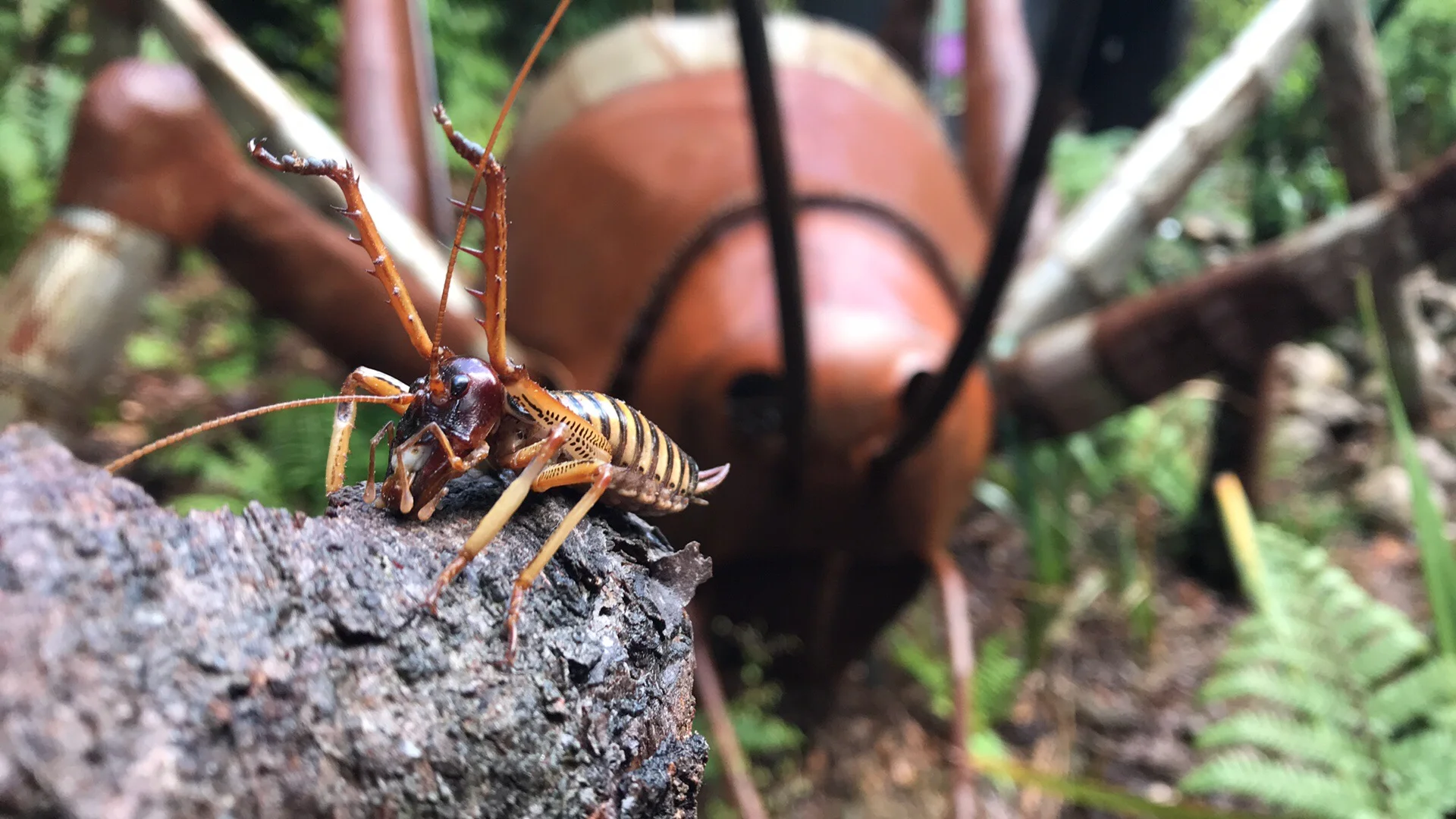A home fit for wētā
In April, Te Wāhi Wētā (the Wētā Place)was officially launched. The new space at Pūkaha National Wildlife Centre weaves together Māori legend and language while shining a light on one of Aotearoa New Zealand’s insects. In the thick of it all is the Giant Wētā, a world-travelling sculpture now calling Pūkaha home.
Words by Helen Cordery. Photos by Sarah Watkins/Tara Swan
There is something awe-inspiring about standing in New Zealand’s forest at night. At first glance it’s pitch black, eerily silent, and still. Wait two minutes and there is movement, a rustling of leaves and then the screech of kākā. Listen closely, and the unmistakable chirruping of insects sound in the background.
Insects are, without doubt, one of the most important components of our ecosystem and the wētā is our most distinctive, striking horror and fascination in children and adults alike.
“Te Wāhi Wētā came about because we wanted to expand the teaching and learning opportunities beyond birds,” says general manager Emily Court, “The wētā display area had been on the drawing board for almost two years because of the critical status’ of the Cook Strait and wētāpunga species”.
It is fitting, then, that Pūkaha recently received the Giant Wētā, a 50:1 scale replica of a giant wētā, accurate in everything except size. The colossal sculpture stands 1.6m tall and 5m long with long wavering antennae that pierce through the tree tops above. Its texture is perforated steel, brilliantly illuminated at night by moonlight or strategically placed lighting.
The sculpture was built by the Auckland Burners,a group of KiwiBurners who constructed the wētā with a partial grant from Burning Man. In 2016 it was shipped to the Burning Man festival in the United States in a container before returning to New Zealand. It was donated to Pūkaha in 2019 and on April 12th the new attraction officially opened to the public.
Wayne Pitau, recently appointed Cultural Tourism Development Advisorat Pūkaha, says that the space’s importance is significant.
“We are remembering Tāne and his children, and acknowledging iwi by doing things correctly. Our involvement is becoming more present, and is helping to return the mana (prestige) to this place. Pūkaha is the kaitiaki–the caretaker–of Te Waonui aTāne, a space that includes whenua (land), manu (birds), ika (fish), rakou(tree) and also the ngāngara, our insects.”
The new space includes specially built “wētā hotels”, safe spaces for wētā or other insects tonestle away from predators.
Biodiversity has long been important to the Pūkaha mission. It’s latest biodiversity audit–the most comprehensive in its history–is currently under revision.
Pūkaha is also working towards year-round rodent suppression in ‘zones’ within the reserve to better help small birds, invertebrates and lizards. The creation of safe spaces such as these will hopefully attract more insects to the area and thereby increase populations of species such as geckos and skinks.
“Insects like our wētā contribute to the health of the forest and are a food supply, ”says captive breeding ranger, Mireille Hicks,“They also give us an indication if things are working properly out there. If the ecosystem is out of balance then you know there is something wrong.”
The launch featured a speech by Auckland Burners representative, Hippathy Valentine, and amihi, karakiaandwaiata by Wayne.
Te Wāhi Wētā can be found within the Pūkaha forest, just twenty minutes north of Masterton. Visiting hours are between 9:00am-4:30pm, seven days a week.




